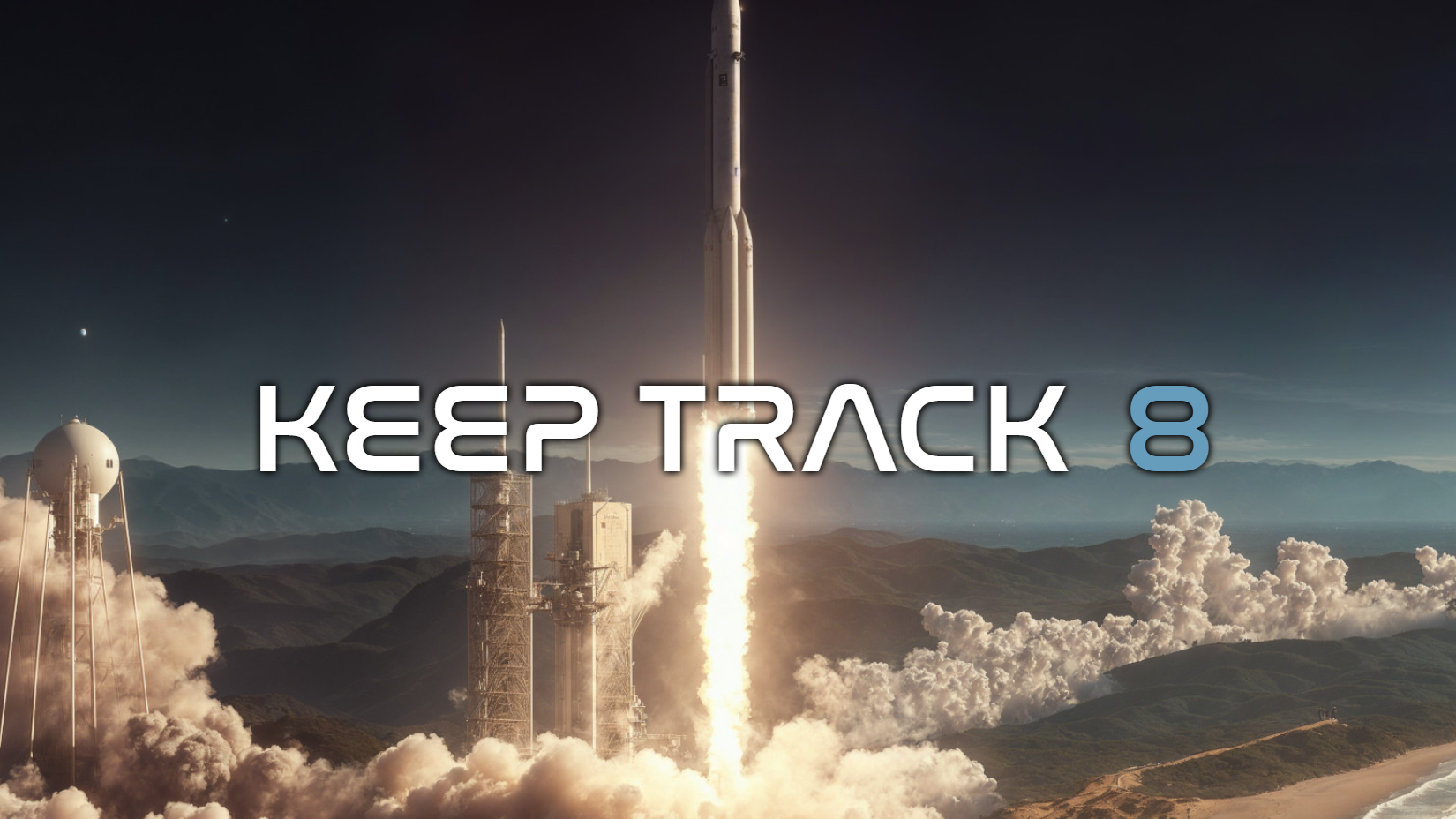- Project Overview
- Who Should Use KeepTrack?
- Features
- Screenshots
- Installation
- Usage
- Code Structure
- Previous Versions
- Contributors
- License
Welcome to KeepTrack, an ambitious project aiming to make orbital analysis tools accessible to all. Keep Track is the only astrodynamics tool designed for non-engineers. It provides a simplified and streamlined experience for learning and interacting with satellites and space debris. Keep Track is built from the ground up with custom WebGL shaders and a high-performance render loop. It can simulate 2.5 million pieces of debris at 60fps. The core app is only 7 Mb and loads in 2 seconds. It's free, open source, and works on any modern browser.
Keep Track is used in operations centers, classrooms, and outreach programs. Here are some examples of how different groups use Keep Track:
- Get popup alerts when a satellite will pass through a sensor
- Find when sensors can see a priority satellite in seconds
- Easily simulate new launches for mission planning
- Learn through hands-on interaction, making learning engaging
- Use Xbox controllers for classroom demonstrations
- Experience AAA video game quality graphics
- Embed Keep Track on your website for free
- Show your satellite design in orbit before launch
- Explain space sustainability and the problem of debris
The feature set rivals those of expensive toolkits, such as AGI's STK, and includes the ability to:
- View comprehensive satellite data
- Perform advanced field of view calculations
- Create notional maneuvers
- Model satellite breakups
- Simulate new satellite launches
- And much more
A github page is automatically deployed with the most-current version of the main branch to https://thkruz.github.io/keeptrack.space/. Periodically the most stable version will be pushed to https://keeptrack.space from the CI/CD pipeline.
KeepTrack.Space is built using ES6+ modules and assembled with Webpack. If you would like to build it locally, you need to install git and npm.
git clone https://github.com/thkruz/keeptrack.space #Clone the github files.
cd ./keeptrack.space/ #Switch into the directory.
npm i #Install the dependencies.
npm run build #Build the project.
npm start #Start the server.KeepTrack was designed to run without the need for a server. On Windows, close all open copies of chrome and then launch the included KeepTrack.bat file. This will launch the index.html file inside of chrome with the "--allow-file-access-from-files" flag temporarily enabled. This is necessary to allow loading the catalog .json files from your computer.
NOTE: You MUST compile the code first. Opening the index.html file in the src folder will not work. If that feels overwhelming, take a look at https://github.com/thkruz/keeptrack.space/tree/gh-pages for a built version that can be downloaded and launched without the need to build it.
The main index.html page loads a canvas element set to the size of the window that displays the earth, satellites, and stars. The UI is loaded in DOM elements on top of the canvas element. Two webworkers are loaded (positionCruncher.ts and orbitCruncher.ts) to handle constant calculation of satellite locations and updating orbit lines when an object is highlighted.
The main draw loop (drawManager.ts) has been optimized to reduce memory leaks and to keep FPS high. This is commonly done by having functions modify global variables vs returning a variable and using long functions rather than splitting them into pieces - this is definitely intentional.
Any modifications to a satellite require that information to be passed to the positionCruncher webworker to ensure the UI calculations match the dot on the screen. Most calculations utilize a brute-force method of guess and check (lookangle times, missile trajectories, etc). Optimizing the loop for those calculations is critcal to keeping the project responsive. One trick to improve performance is that satSet creates a dictionary of index -> Norad ID number and index -> COSPAR number to allow rapid lookup of satellite data.
There are Typescript files for generating TLE.json that are not included, but http://keeptrack.space/tle/TLE2.json can be referenced for an up-to-date catalog.
- Version 7.2 - Nebula Navigator
- Version 7.0 - Vega Viewpoint
- Version 6.0 - Celestial Symphony
- Version 5.4 - Orion Overhaul
- Version 5.0 - Apollo Augments
Copyright (C) 2016-2024 Theodore Kruczek
Copyright (C) 2020-2024 Heather Kruczek
KeepTrack.Space is licensed under the GNU Affero General Public License. This means you can freely use, modify, and distribute it, provided you adhere to the terms of the license. For more details, see the Full License.












